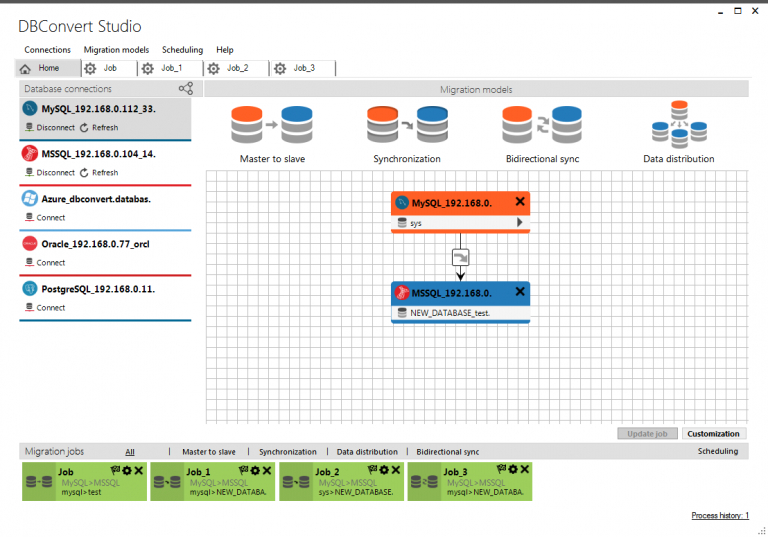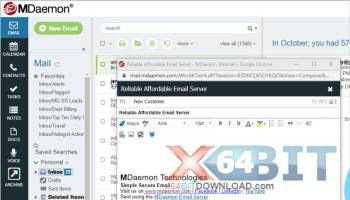
> I take the opportunity to know how I should configure it so that the homepage opens « It's not because they are many to be wrong, they are necessarily right. « Ce n'est pas parce qu'ils sont nombreux à avoir tort, qu'ils ont forcément raison.
#Mysql database server x64 64 bit install
PhPMyadmin 5.2.0 - MysqlDumper 1.24.5 on W10 and W7 Pro 64 bitĭocumentation Apache - Documentation PHP - Documentation MySQL - Wampserver install files & addons

> In what I created manually there is: - Database: `banco_teste` (in Portuguese) > What was imported - Database: `banco_teste` It is imperative that you have first created the `banco_teste` database before you want to import the file.Īnd it is also imperative, if in the SQL file you do not specify USE `banco_teste` to first select the database in PhpMyAdmin before requesting the import. Since at the beginning of the SQL file you don't have:ĬREATE DATABASE IF NOT EXISTS `banco_teste` DEFAULT CHARACTER SET utf8mb4 COLLATE utf8mb4_general_ci In what I created manually there is: - Database: `banco_teste` (in Portuguese) INSERT INTO `listas` (`ID_item`, `Item`) VALUES Extracting data from the `registration` table ) ENGINE = InnoDB DEFAULT CHARSET = latin1 `CustomerName` varchar (30) DEFAULT NULL, In what I created manually there is: - Banco de dados: `banco_teste` (in Portuguese)Ģ) The database I imported from the previous version of phpMyAdmin is editing in Notepad ++ like this:ĬREATE TABLE IF NOT EXISTS `registration` ( What was imported - Database: `banco_teste` I found it strange that on the line where it says: *! 40101 SET COLLATION_CONNECTION = OLD_COLLATION_CONNECTION * / *! 40101 SET CHARACTER_SET_RESULTS = OLD_CHARACTER_SET_RESULTS * / *! 40101 SET CHARACTER_SET_CLIENT = OLD_CHARACTER_SET_CLIENT * / (2, 'Another record created for testing') (1, 'I am testing a bank created manually in the new version'),

INSERT INTO `tb_banco_teste` (` banco_teste_id`, `nome_teste_b_teste`) VALUES Extracting data from the `tb_banco_teste` table ) ENGINE = InnoDB AUTO_INCREMENT = 3 DEFAULT CHARSET = utf8mb4 COLLATE = utf8mb4_0900_ai_ci `test_name_b_test` varchar (250) NOT NULL, `banco_teste_id` int (11) NOT NULL AUTO_INCREMENT, Structure of the table `tb_banco_teste`ĬREATE TABLE IF NOT EXISTS `tb_banco_teste` (

*! 40101 SET = COLLATION_CONNECTION * / *! 40101 SET = CHARACTER_SET_RESULTS * /

*! 40101 SET = CHARACTER_SET_CLIENT * / Sorry for the English because I'm translating.ġ) The database I created with a new version of phpMyAdmin editing in Notepad ++: I've been trying for two days and I can't solve it.įirst I would like to thank you for your attention to my case. I clarify that the database is not imported. It turns out that it only shows error according to this example:įile name in the backup folder: banco_teste.sqlĪfter pointing to the file and clicking "Run" it shows the following result:ġ) "Import finished successfully, 18 queries executed. To do the import I clicked on the "import" tab, then went to "Search your computer:" "Brawse" and pointed to my file that I want to import. I couldn't find where to mark it so I can enter it with "MySQL".Īs I always used MySQL I left MySQL checked and opened "phpmyadmin" at http: //localhost/phpmyadmin/index.php? Server = 2. In "Server choice:" it shows "MariaDB" and before I entered MySQL. Then opened the home screen "Welcome to phpMyAdmin" and in "User:" I indicated "root", as I always did. With that, I clicked on phpMyAdmin 4.9.2. I noticed the need to install some files at that time indicated in the installation.
#Mysql database server x64 64 bit 64 bits
Then I went to [ and downloaded WAMP SERVER 64 BITS (X64) 3.2.0. I left it marked "Fast - displays the minimum of options". With that I backed up all databases in this way: I clicked on the database, then on "Export".


 0 kommentar(er)
0 kommentar(er)
